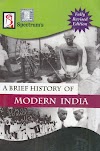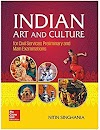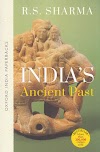Volcanism (Vulcanism)
Volcanism - Volcanism includes all the phenomena associated with the movement of molten material from the interior of the Earth to the surface.
It includes 3 main processes -
- Generation of magna (in the mantle or Asthenosphere)
- Intrusion of magna into the lithospheric layer
- Extrusion of magma on to the surface
Generation of Magma -
Magma is generated in the lower layer of the Earth due to -
- increase in heat because of increased radioactivity.
- decrease in pressure which causes the lowering of melting point
- increase in water content which again reduces the melting point of the rocks
Any of the above conditions may lead to melting of rocks and the generation of magma.
Magma - Magma is hot, mobile molten silicate material. It is made up of the combination of solid, liquid and gases. When magma reaches the surface it erupts as Lava.
Types of Magma -
1. Granitic magma -
- Silica content - 60 to 70%
- Lighter in colour
- Lighter in density
- Less fluid (high viscosity)
- Less temperature
- Usually cools below the surface leading to the formation of Intrusive igneous rocks
- Have more Silica content
2. Basaltic magma -
- Silica content - less than 52%
- Darker in colour
- Heavier
- More fluid
- High temperature
- Usually comes out on to the surface forming Extrusive igneous rocks
- Magnesium (Mg) and Iron (Fe) content is more
Magma generation and Plate tectonic -
Divergent plate boundary (Ocean-Ocean divergence)
- Magma is generated along the mid-oceanic ridges
- Due to the convection current or mantle plumes
- Slow and continuous eruption
- Magma is mostly Basaltic in nature
Divergent plate boundary (Continent-Continent divergence)
- Magma is generated along the Rift valley
- Due to convection current and mantle plumes
- Slow and continuous eruption
- Magma is mostly Basaltic in nature
Convergent plate boundary (Ocean-Ocean convergence)
- Magma generation leads to the formation of Island Arc and Archipelago
- Violent and discontinued eruption
- Magma is Andesitic in nature
Convergent plate boundary (Ocean-Continent convergence)
- Ocean-Continent convergence leads to the formation of Fold mountains (magma/lava is channelized through these mountains)
- Violent and discontinued eruption
- Magma is Andesitic in nature
Note - In Continent-Continent convergence and in case of Conservative plate boundary, there is no generation/formation of magma/volcanoes.
Hotspots
- Hotspots are present in the regions of intra plate, i.e., not at plate boundary
- Hotspots are formed because of Mantle plumes
- Violent and discontinued eruptions
- Magma is Basaltic in nature
Note - Deccan plateau was formed when Indian plate was moving over Reunion hotspot.
Distribution of Volcanoes -
- Ridge Volcanism - Ridge volcanism is present along the ocean floor through mid-oceanic ridges. Example - Carlsberg Ridge (India-African plate), East Pacific Ridge, etc
- Volcanic Arc - It is present along the Ocean Ocean Convergent plate boundary. Example - Japan, Kuril islands, Aleutian islands, etc
- Volcanic chains - It is present along the fold mountains in the zone of Ocean Continent collision consisting of straight lines of volcanoes along the continental margin. Example - Andes and Rockies
- Volcanic clusters - It is present along the Rift Valley where the Continent Continent divergence happened. These are found on the continents. Examples - Volcanoes near East African Rift Valley
- Volcanic lines - These are the lines of linearly arranged volcanoes above the hotspots. Example - Hawai'i island, Reunion island, etc.
Volcanic features or Volcanic landforms -
1. Extrusive features
- Volcanic Cones (Shield volcanoes, Ash-Cinder volcanoes & Strato/Composite volcano)
- Crater (depression at the top
- Caldera (enlarged depression at the top)
- Flood basalt province (caused by fissure eruption)
- Hot springs (hot water springs)
- Geysers (hot water + Steam)
- Fumaroles (only steam & gases)
2. Intrusive features
- Batholith
- Lapolith
- Lacolith
- Phacolith
- Sills
- Dykes
Extrusive features
Volcanic cones - Volcanoes are divided into 3 mains types according to characteristics features of volcanic cones. These are -
- Shield Volcano- It is made up of very fluid lava flow. It is very wider and larger in size but the slope is very less. These are the largest of all volcanoes. It is made up of Basaltic magma.
- Ash-Cinder Volcano - It is formed by the accumulation of loose volcanic debris around the vent. The continuous accumulation of volcanic material without the lave will lead to this type of volcanoes. Sometime, it is accompanied by a intermittent flow of viscous lava.
- Strato/Composite Volcano - It is due to the accumulation of viscous volcanic material which forms different layers with lava acting as cementing material. This lava is cooler and viscous than that of shield volcano.
Crater - These are the depressions which are funnel shaped and are formed at the mouth of volcanic vent.
Caldera - These are greatly enlarged depressions formed due to the violent explosion of volcanic cones in the magma beneath.
Water may gets collected in a crater or caldera leading to the formation of Crater lake or Caldera lake.
Flood basalt province - These are formed due to the fissure eruption of highly fluid lava flowing for long distance convering thousands of KMs.
As per the Plate tectonic theory (and Continental drift theory), the Indian plate while moving towards Eurasian plate passes through a hotspot (at Reunion Islands), thus Deccan plateau (flood basalt province) was formed due to fissure eruption.
Hot Spring - It is also called thermal spring where the water sinks deep enough beneath the surface to be heated by a hotspot or a magma chamber. This heated water rises to the surface without explosion and flows continuously.
It contains dissolved minerals and has medicinal values.
Example - Rajgir, Manali, Manikaran, Tatapani, Iceland, etc
Geysers - The formation of hot water and super heated steam ejected intermediately with explosion at a regular interval is known as geysers.
Example - Iceland, USA (old faithful geyser), Newzealand, etc
Fumarole - These are the continuous jet like emissions of stream and other gases.
Intrusive features
Batholith - These are large irregular dome shaped features and large body of magmatic material that cools in the deeper depth of the crust and it develops large dome.
Lopolith - If the magma solidifies in a saucer shaped shallow basin, it is called Lopolith.
Laccolith - It is a dome or mushroom shaped feature formed due to intrusion of magma along bedding plane. It will have conduit like structure which connect it to the magma chamber.
Phacolith - It is formed by the intrusion of magma along anticline and syncline of folds layers below the surface.
Sills - These are the horizontal layers of magma accumulation along the bedding planes.
Dykes - These are the vertical wall like formations due to the accumulation of magma.
Concordant features and Discordant features -
- Concordant features - If any of the magma accumulation has formed along the one layer without disturbing the other layer, it is called concordant features. Example - Sills, Lopolith, Phacolith
- Discordant features - Formed in more than one layer. Example - Batholith, Laccolith, Dyke
Types of Volcano (on the basis of volcanic activity)
- Active Volcano - Volcanoes which erupted atleast once in human history are called Active volcano. Example - Ojos Del Salado (Argentina), Mount Etna (Italy), etc
- Dormant Volcano - Volcanoes which are not erupted in the human history but still connected to magma chamber and may erupt in future. Example - Mount Kilimanjaro (Tanzania), Mount Fuji (Japan). etc
- Extinct Volcano - Volcano with no connection with magma chamber and has no chance of eruption. Example - Mount Slemish (Ireland)
Previous Article - Plate Tectonic theory
Next Article - Geomagnetism
Notes on other subjects
Optional Notes
Note - This is my Vision IAS Notes (Vision IAS Class Notes) and Ashutosh Pandey Sir's Public Administration Class notes. I've also added some of the information on my own.
Hope! It will help you to achieve your dream of getting selected in Civil Services Examination 👍











.jpg)
.webp)






0 Comments